You step out of your car after a long day at work, and you notice that one of your shoes is looking a little bit different than the other. Upon closer inspection, you realize that the leather on the toe of your shoe has started to crack. This can be a real nuisance, especially if it’s a favorite pair of shoes! In this article, we will discuss how to fix cracked leather shoes using some simple techniques. We will also answer some common questions about repairing cracked leather shoes. Let’s get started!
What Can Cause Your Leather Shoes to Crack?
Unfortunately, leather can experience wear and tear over time, leading to cracking. This is especially true with shoes made of thin leather or those exposed to extreme weather conditions such as rain, snow, or intense sunshine. Unlike other materials like a canvas which are more forgiving in terms of wear and tear, cracked leather can be difficult to repair without proper care.
But sometimes, even extreme care isn’t enough to prevent some cracking of leather shoes.
Now that you know the basics, it’s important to understand what can cause your leather shoes to crack. Knowing the signs and what could have caused the damage can help you determine the best course of action for getting your shoes repaired.
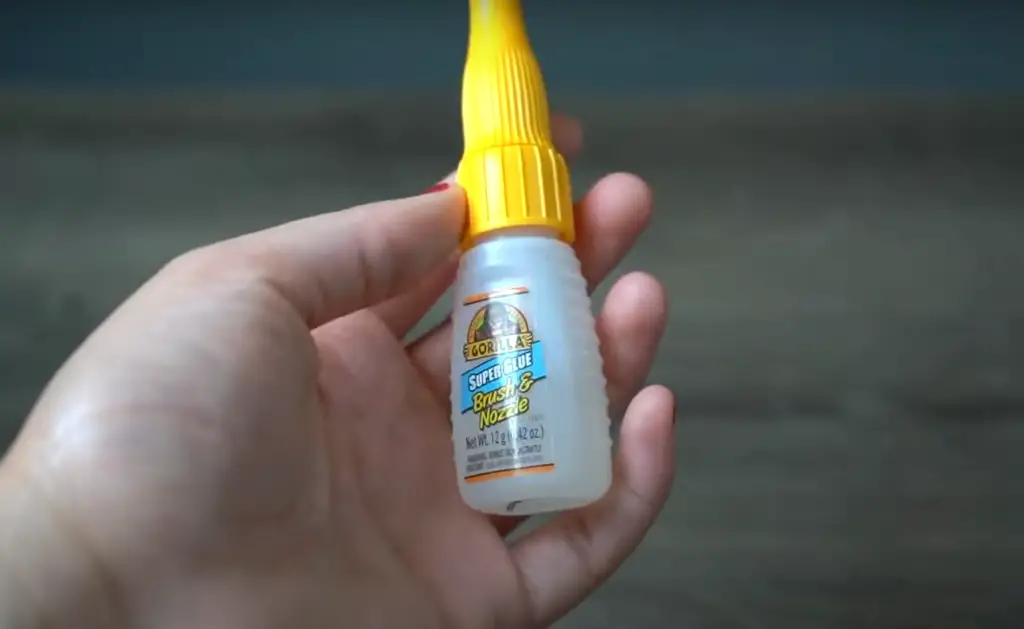
Diagnosing the damage
The first step in repairing any problem is diagnosing it accurately. When dealing with cracked leather shoes, it’s important to determine what kind of damage has occurred. This will help you decide which type of repair is best for your particular situation.
It’s also important to note any signs of mold or mildew on the leather as they will need to be addressed before attempting any repairs. It’s best to have your shoes professionally cleaned if you see any signs of mold or mildew.
Poor care and maintenance
Poor care and maintenance of your leather shoes can cause them to crack or tear over time. Leather is a natural material that needs to be conditioned regularly in order to remain flexible and retain its protective qualities.
And of course, frequent cleaning and polishing is essential for leather shoes. Dirty leather will not only look bad but can also cause the material to crack and break down over time.
Leather should also be cleaned and protected from water, dirt, and other elements that can damage it. Storing your leather shoes in a cool, dry place when not in use will help keep them looking their best for longer.
Improper cleaning
In addition to regular conditioning and polishing, it’s essential that you properly clean your leather shoes as well. Harsh detergents or abrasives can cause the leather to become brittle and crack, so it’s important to use the right cleaning materials.
Leather cleaners or neutral detergents are recommended for cleaning leather shoes. Make sure that you read the instructions on any product before using it as some may require additional steps (such as conditioning) after they’ve been used.
You should also check the label of a leather conditioner before applying it to your shoes. Some may contain ingredients that can damage or discolor the leather, so it’s best to use one specifically designed for leather shoes.
Improper storage
Just as important as proper cleaning and polishing are the way you store your leather shoes when not in use. Leather will dry out quickly in a hot or humid environment, so it’s important to keep them stored in a cool, dry place. Leather shoes should also be stored away from direct sunlight and away from other sources of heat like radiators or vents. High temperatures can cause the leather to crack and break down over time.
In addition, make sure that any leather shoes that are wet are allowed to air-dry naturally before being put away. Direct heat from a blow-dryer could cause irreparable damage and further cracking of the material.
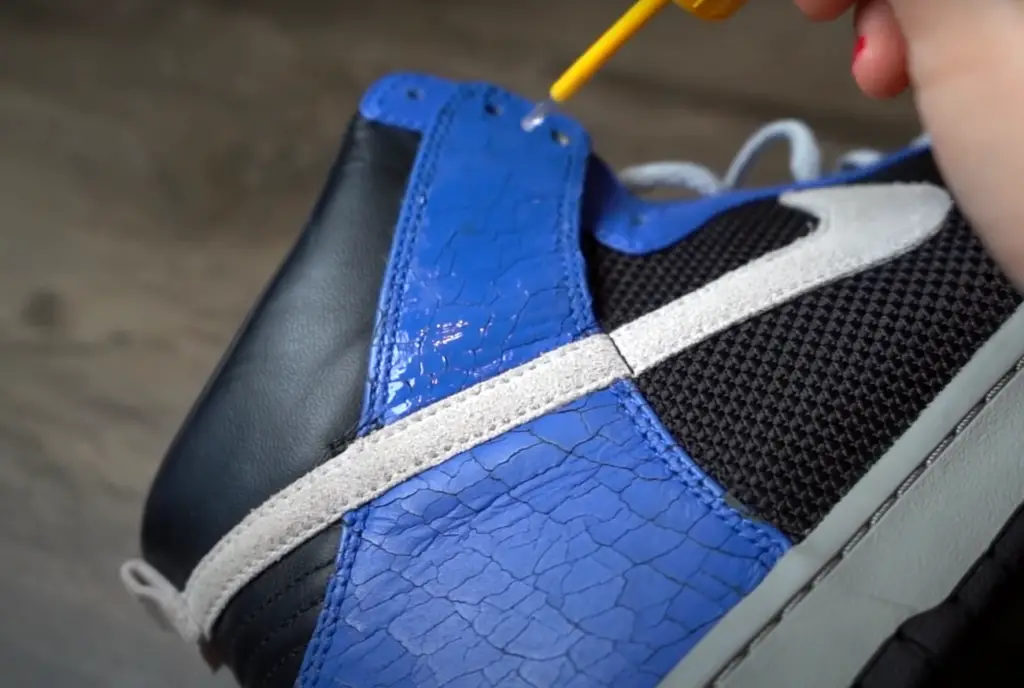
If you don’t use your shoes often, consider investing in a shoe tree or other form of shoe storage which will help keep the shape of the shoes and prevent cracking. You can also stuff the shoes with tissue paper in order to help keep their shape.
Mold growth
Mold growth on leather shoes is a common problem that can cause the material to weaken and become brittle, leading to cracking. This issue is usually caused by storing the shoes in an environment with high levels of humidity or moisture.
If mold has grown on your leather shoes, it’s important to take action quickly before the damage becomes irreversible. You might need to resort to vinegar or special leather cleaners to remove the mold.
However, if the mold damage is really bad, it’s best to get yourself a new pair of shoes as mold can be difficult to remove completely and may cause permanent damage. It’s also important to make sure that you store your leather shoes in a cool, dry place from now on in order to prevent this problem from recurring.
Dirt built-up
Dirt buildup is one of the most common causes of cracked leather shoes. Since leather is a porous material, it can absorb and retain dirt particles from environmental sources. The accumulation of these particles not only causes discoloration but also weakens the surface of the shoe over time, leading to cracks in the leather’s protective layer. To prevent this, it’s important to keep your leather shoes clean by using a suitable cleaning product and a soft brush. Be sure to also invest in a special suede brush if you have suede or nubuck shoes as regular brushes could damage the material.
Not dealing with creases in time
Another of the major causes of cracked leather shoes is not dealing with creases in time. Leather shoes are often subject to lots of wear and tear, which causes wrinkles and creases on the surface. If these aren’t dealt with immediately, it can lead to cracking over time as the creases start to weaken the protective layer of the shoe.
To avoid dire consequences, always inspect your shoes for any creasing or wrinkles and take action quickly. It’s also important to store your leather shoes in the correct way so that they wouldn’t lose their shape and form creases in the first place.
Improper or rough handling
You should always handle your leather shoes with care. Rough handling and putting too much weight on them can cause the material to stretch and crack over time. It’s best to avoid activities that could put excessive strain on the shoes such as prolonged running or heavy lifting.
For example, if you have a thin-soled pair of leather shoes, it’s probably best to avoid activities that require a lot of running and jumping as this could easily cause the shoes to crack. And watch out for rocks, stones, and other sharp objects in your path as these could easily damage the leather.
Wearing the wrong type of shoe
Wearing the wrong type of shoe for your feet can also cause cracking in leather shoes. Shoes that are too tight or don’t fit correctly can put additional strain on the material, leading to cracked areas. Wearing shoes for prolonged periods of time can also cause them to lose their original shape and weaken, resulting in cracks.
It’s important to invest in a pair of quality leather shoes that will fit your feet properly and won’t cause any discomfort when worn. It’s also important to replace your shoes every now and then so that you’re not subjecting them to long-term wear and tear.
Aging
Finally, no matter how well you take care of your leather shoes, they will eventually start to age. As time passes, the protective layer of the shoe will weaken and it will become more susceptible to cracking. This is especially true for light-colored leather shoes as they’re more likely to discolor over time due to UV exposure.
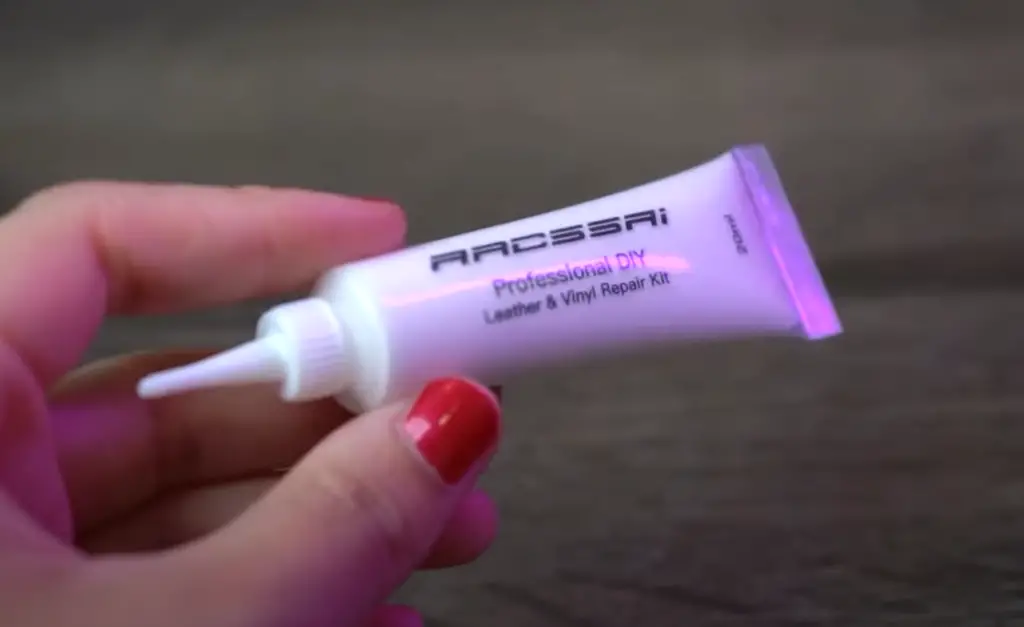
Unfortunately, there’s not much you can do about this other than replacing the shoes every now and then in order to keep them looking fresh and new. You could also consider using a conditioning product or special protector spray that will provide additional protection so that your shoes don’t crack too easily. [1]
Repairing Cracked Leather Shoes
Once you have correctly diagnosed the damage to your leather shoes, you can begin to make repairs. Depending on the type and severity of the cracks, there are several ways that you can go about fixing them. In this section, we’ll discuss how to deal with leather cracks in detail.
Wipe off dirt prior to cleaning
No matter what repair method you choose to use, it’s important to start by cleaning the cracked leather shoes. This ensures that the dirt and other debris don’t interfere with the repair process. Wipe off any dirt or dust from the crack using a soft cloth or brush.
Make sure to avoid using any chemicals or detergents as these could damage the leather. If you have to use something extra, use mild soap and lukewarm water. Then, allow the shoes to air dry completely before proceeding with any repairs.
Spread a leather cleaner evenly over both shoes
To further ensure that the leather is clean, you should spread a leather cleaner evenly over both shoes. This will remove any debris or residue from the leather, making it easier for repair products to penetrate and adhere properly.
Do not forget to wear gloves when applying the product as it can be harsh on your skin. Once you’ve applied the cleaner, allow it to sit for up to 20 minutes before wiping it off with a dry cloth.
Stuff the shoes with something
Once you’ve cleaned and prepped the leather, it’s time to stuff the shoes with something. This can be done using anything from paper towels to clothes. The goal of this step is to maintain the shape of the shoe, so be sure to stuff it firmly. This will also help to temporarily seal the cracks until you can make a more permanent repair.
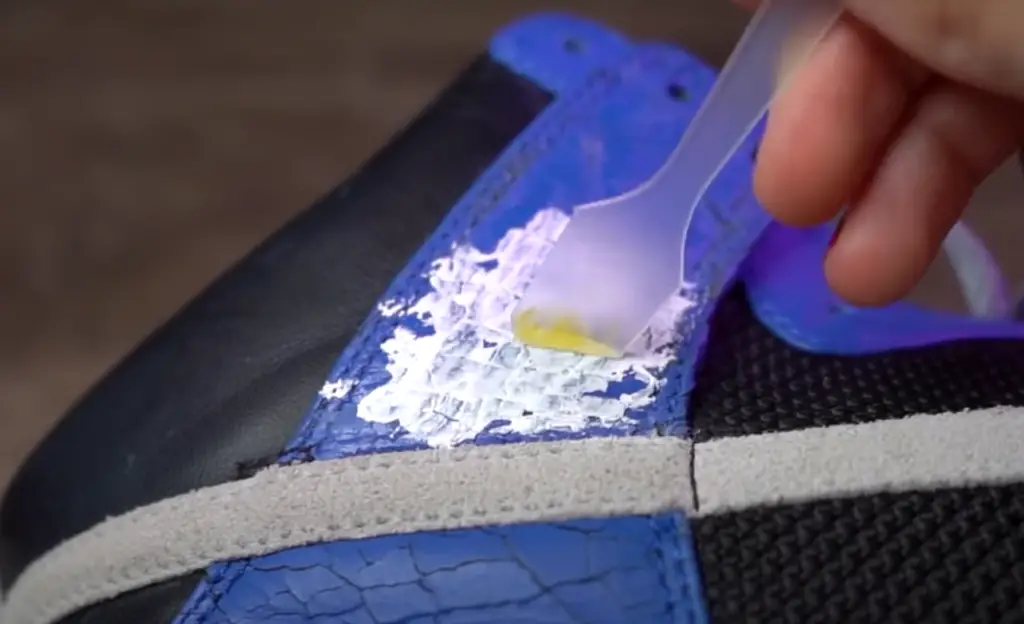
Apply leather conditioner
If the cracks are relatively minor, you may be able to get away with just applying a leather conditioner. Leather conditioners help keep the material soft and supple while also preventing further cracking. Most commercial conditioners come in cream or liquid forms and should be applied according to package instructions.
Simply apply the product to a soft cloth and rub it into the cracks in circular motions. This will help to restore the leather’s natural oils, giving it back some of its suppleness and making it less prone to cracking or breaking down further.
You might need to repeat this process several times for the best results. Once done, be sure to buff the leather with a soft cloth to remove any excess product. [1] [2] [3]
Dealing With Deeper Cracks
As you can see it’s pretty easy to fix minor cracks in leather shoes. However, if the crack is more severe or deep you may need to take a few extra steps to ensure that the repair lasts.
Give your leather shoes a proper cleaning
Just like with any repair, it’s important to give your leather shoes a proper cleaning before you begin. This will help ensure that the repair materials stick and last for as long as possible. Start by wiping down the shoes with a damp cloth to remove any dirt or dust.
Then, mix some mild detergent with warm water in a container. Dip a soft brush into this solution and use it to scrub the cracked area of the shoe until it is completely clean. Wipe off any excess liquid with a dry cloth and allow the shoes to air dry completely before continuing.
Apply a moisturizer to treat the leather
Once the leather shoes are dry, the next step is to treat them with a moisturizer. This will help keep the leather soft and supple while also protecting it from further damage.
Start by rubbing a small amount of leather conditioner or cream into the cracked area of the shoe. Work it in with your fingertips or cloth until the leather is saturated. Allow the moisturizer to sit for 10-15 minutes before wiping off any excess with a clean cloth.
Apply leather filler
Next up is applying leather filler.
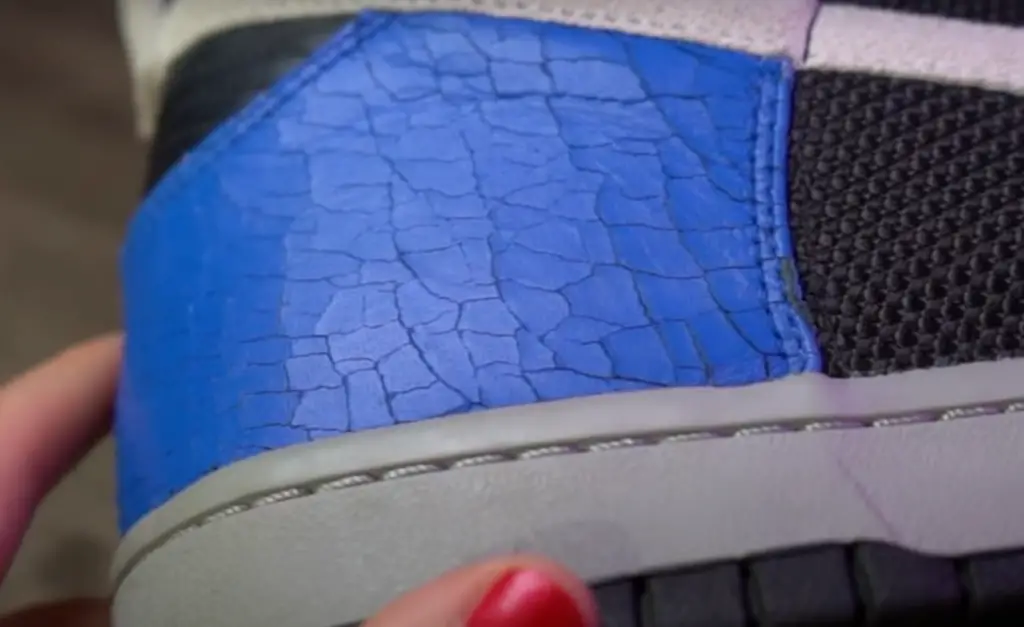
Apply the filler using a clean cloth or a sponge, working it into the cracks until they are completely filled in. Let your shoes dry for at least 30 minutes before continuing.
Inspect your shoes closely
Once the leather filler has had a chance to dry, take a look at your shoes and make sure that the cracks are completely filled in. If some areas still need attention, apply additional filler as necessary.
Buff the filler with a 220-grit sandpaper
Once you’re satisfied with the results, use 220-grit sandpaper to lightly buff the filler and blend it into the leather. This will help ensure that your repair looks natural and blends in with the rest of the shoe.
Work slowly and evenly and be sure to use gentle, circular motions. Once you’re done, wipe off any excess dust with a damp cloth.
If you can’t find 220-grit sandpaper, try getting the finest grit you can find and see if it works well enough. Using anything else may leave an abrasive finish.
Moisturize the shoes again
Sanding and buffing can be tough on leather, so it’s important to moisturize your shoes again after this step. This will help keep the leather soft and supple while also protecting it from further damage.
Use a clean cloth and gently rub it into the cracked area. Allow the conditioner to sit on the leather for several minutes before wiping off any excess with a dry cloth.
If you couldn’t find the exact color of your filler, now is a good time to color it in. You can use a leather dye to match the color of your shoes as closely as possible.
Once you’re done, wipe off any excess liquid with a dry cloth and allow the shoes to air dry completely and you’re done!
One thing worth mentioning, the above methods are purely cosmetic and will not fix any structural damage to the shoes. If your shoes are severely cracked or damaged, it’s best to replace them for better results. [1] [2] [3]
FAQ
Can real leather crack?
Yes, real leather can crack. This is because of the fact that over time natural materials like leather tend to age and become more fragile. Leather shoes are subject to wear and tear, such as scuffs and scrapes, which can weaken the material if not addressed properly. Heat, moisture, and oils from our skin can also contribute to leather cracking.
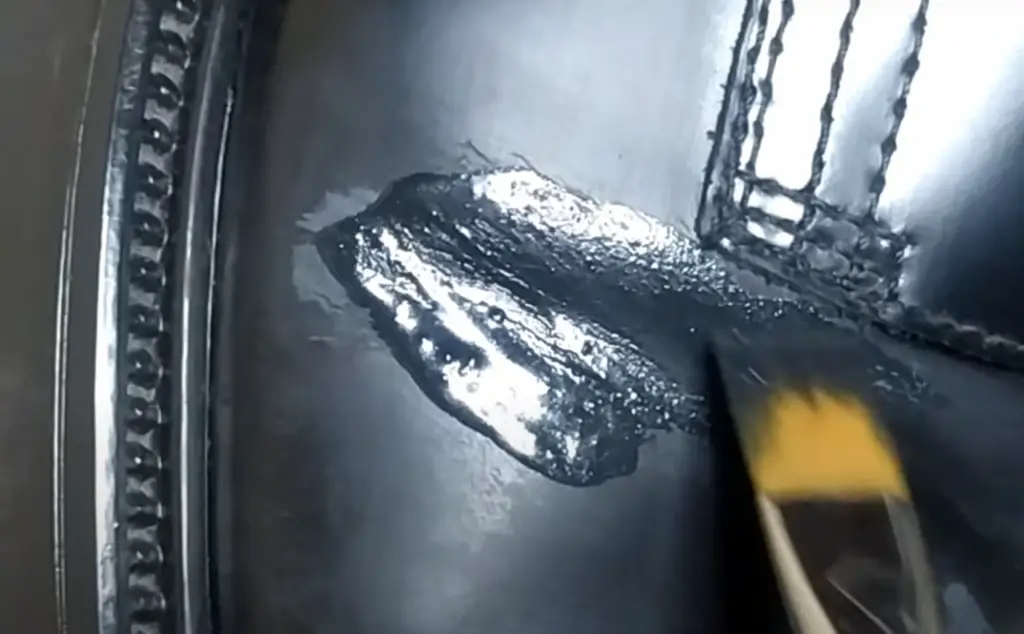
However, if you take good care of your leather shoes and ensure they are properly conditioned and stored, you can reduce the chances of cracks developing over time.
Can cracked shoes be repaired?
While you can cosmetically fix cracked shoes, it is important to note that the cracks may continue to worsen over time. Even leather filler will wear away or darken over time, so it is important to use the right products and techniques that are specifically designed for repairing leather.
When the cracks get really bad, there’s little that can be done to restore the shoe and it may need to be completely replaced. To avoid this trouble, we suggest you take proper care of your shoes to prevent further damage and keep them looking good for longer.
Can you rehydrate cracked leather?
While future cracks can be prevented by applying leather conditioner once or twice a year, existing cracks cannot be 100% reversed. To rehydrate cracked leather you can use either an oil, leather balm, leather conditioner, or a combination of these.
Keep in mind that when using a conditioning product, it should be applied sparingly and left to absorb into the leather for some time before buffing off any excess. If too much is used, it can cause further damage by causing mold or mildew growth due to over-saturation of the leather.
Why is the leather cracking on my shoes?
The two most common causes of leather cracking are insufficient care and overexposure to extreme weather conditions. For example, constantly wearing one pair of shoes without allowing them time to dry out fully can cause the leather to become brittle and crack after a while. Similarly, regularly exposing leather shoes to heavy rain or snow can also cause cracks and other damages.
In addition, using harsh cleaning products on your leather shoes may contribute to wear and tear over time as these chemicals strip away vital oils from the material that protects it from cracking. Lastly, old age can also be a factor in shoe cracking as materials tend to become more brittle and less pliable as they age.
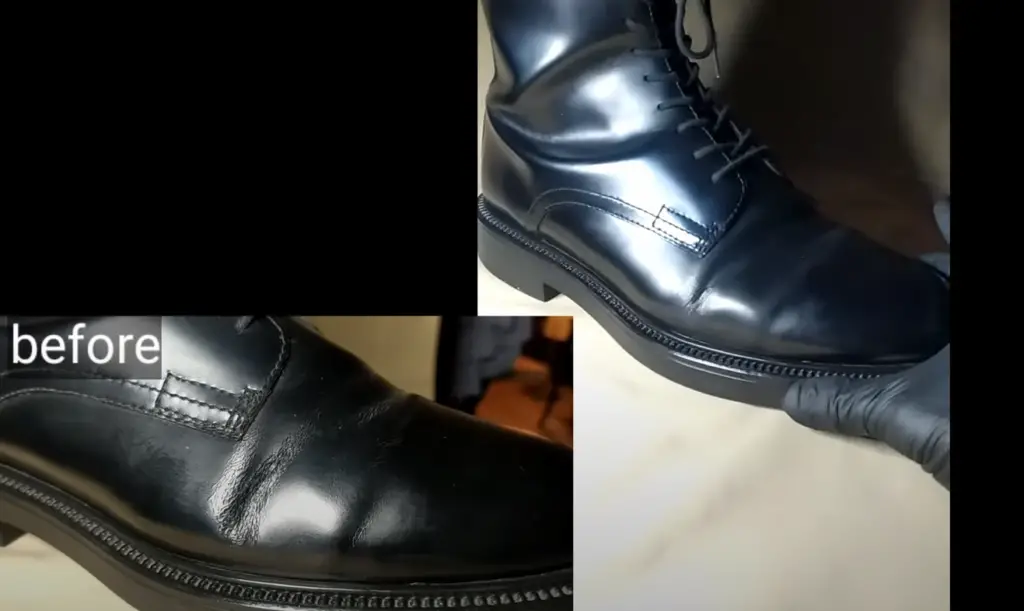
Unfortunately, once the leather has cracked it cannot be fully repaired or restored to its original state; however, there are methods you can use to help protect your shoes and minimize further damage.
Can you use Vaseline on cracked leather?
Yes, Vaseline is safe to use on cracked leather. It is a great option for moisturizing and protecting the leather from further damage. When using Vaseline, you should use a small amount and spread it evenly across the surface of the leather. Make sure to avoid getting too much on any one spot as this can cause discoloration over time. Once applied, gently buff with a soft cloth until fully absorbed into the material. This will help keep your leather looking its best for longer!
Just keep in mind that while it can prevent cracking, it cannot fix it once it’s already happened. For best results, use Vaseline to prevent future cracking, and use a leather repair kit if you need to fix existing cracks.
Useful Video: Fixing the Worlds Most Cracked Shoe! How to Fix Cracked Leather Shoes
Conclusion
You had a great pair of leather shoes but unfortunately, they became cracked. Luckily, with our ultimate guide, you’ll now know the best way to fix them. Whether you choose to use shoe polish and a brush, leather conditioner, mink oil, beeswax, or an adhesive patch kit, these easy steps will have your leather shoes looking as good as new in no time. Taking preventative measures such as polishing regularly and storing shoes away from direct heat are also important steps that can help keep your leather shoes in top condition for years to come.
In this article, we have covered all the best ways to repair and maintain your leather shoes from tiny cracks to more serious damage. With a few simple steps, you can go from having cracked leather shoes to a beautiful pair of footwear.
And keep in mind that prevention is key. Some basic maintenance like cleaning regularly and storing your leather shoes in a cool, dry place can go a long way towards preserving their appearance and life span.
The most important thing to remember when fixing cracked leather shoes is to take your time and do it right. Don’t rush through the process or try to cut corners as this could cause more damage in the end. If you follow all these steps, your shoes should be looking good as new in no time!
One thing we want to point out, the methods highlighted in this article will only fix the shoes cosmetically, not the underlying structural issues. If you find that your shoes are suffering from structural damage, it would be best to take them to a professional for repairs or look into finding a replacement pair of shoes altogether.
We hope this guide gives you the confidence and tips necessary to fix those cracked leather shoes and make them look as good as new. Thanks for reading!
References:
- https://favoredleather.com/why-do-leather-shoes-crack/
- https://www.wikihow.com/Fix-Cracked-Leather-Shoes
- https://essential.construction/news/how-to-repair-cracked-leather-boots-a-detailed-guide/

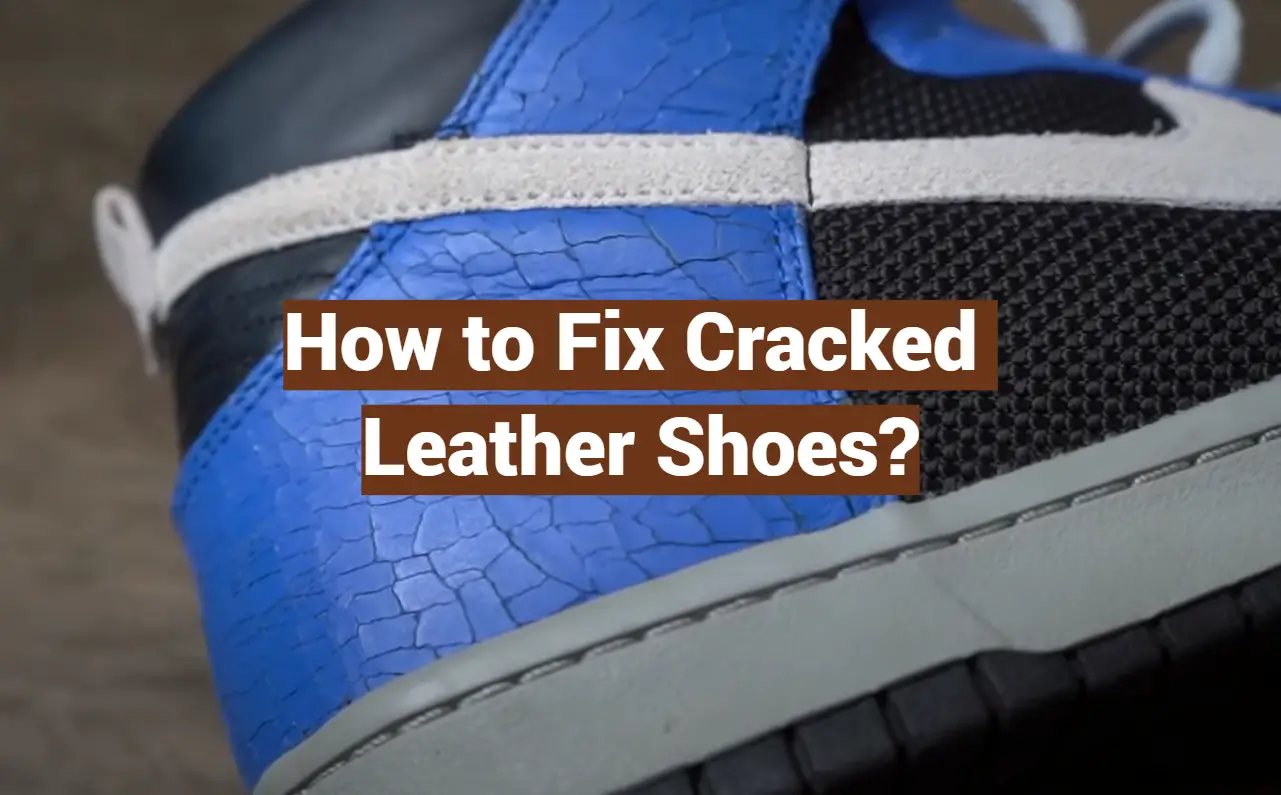
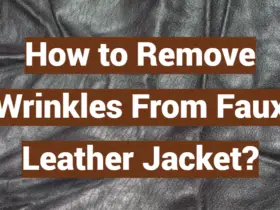




Leave a Reply